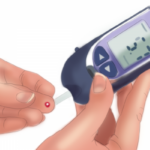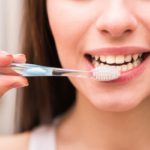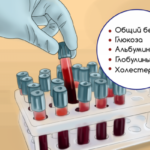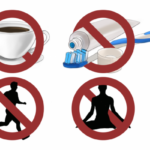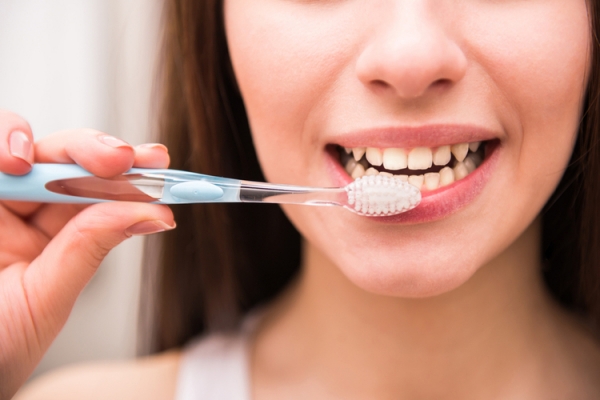
11.10.2018
2018-10-11
Gennady Solovyov
0
The contents
Why the need for brushing your teeth?
Basic rules of dental cleaning
What pasta is best to brush your teeth?
Than cleaning teeth?
Electric brushes
The scheme of brushing with a regular brush
The cleansing of language
The right moves
Teeth cleaning is a procedure that every day in the morning or evening do billions of people around the world. What do we know about this seemingly simple thing? It turns out, not everyone knows how to brush teeth the right way to hold the brush, what movements to clean the teeth. And wrong methods of brushing can negate the benefits of this procedure.
Why the need for brushing your teeth?
Such cleaning is not a natural physiological procedure. However, thousands of years ago people noticed – if you brush your teeth after a meal, it reduces the likelihood of diseases of the teeth. Because dentists did not exist, then any tooth decay has led to tooth loss. Now of course the situation has changed for the better. However, to prevent the disease is easier than to treat it. Besides, dental treatment is not cheap thing, and also associated with stress. It should take into account the fact that our diet over the centuries has undergone serious changes. In our diet became more carbohydrate food creating a good environment for the propagation of cariogenic bacteria. Consequently, the probability of occurrence of caries in the individual approached 100%.
There is only one preventative tool that allow, if not ensure the absence of disease, then at least reduce the probability of its occurrence is cleaning the oral cavity with a toothbrush. This is not some kind of magical ritual that creates invisible protection around the teeth. Cleansing of the oral cavity has a very practical sense – the removal of the tooth surfaces of food particles and plaque that create the conditions for the development of caries.
Basic rules of dental cleaning
Most people learned from childhood that you need to brush your teeth every day, and not less frequently than two times per day. However, to assimilate is one thing, but in practice not all comply with this rule. Which inevitably leads to the fact that dental health is deteriorating, and we have to go to a dental office doctor.
How many times a day is necessary to perform this hygienic procedure? Perhaps, many feel that the more often the better, but it’s not. The experts, however, there is no consensus about this. At least, all agree on the fact that two procedure done in the morning and evening is mandatory.
The most useful and absolutely mandatory is a formal procedure. This is due to the fact that the teeth are more or less protected from the effects of plaque because of the cleaning properties of saliva. At night, the saliva in very small amounts. But the cariogenic bacteria that live in your mouth, unlike people, do not sleep and do their destructive activities without encountering any obstacles. And many people in my own experience I can confirm this when you get up in the morning with a strange taste in the mouth, aching gums and teeth. That all the results of life of malware of dental microflora. Therefore, in order to before going to sleep these bacteria would be less, you need a thorough evening cleansing of the oral cavity.
As for the morning brushing your teeth, here the views of doctors differ. It is clear that it should be carried out, but when? Previously dominated by the view that, as a formal procedure, it is necessary to do after a meal. However, in recent times it has become popular opinion that the procedure is best done before Breakfast, on an empty stomach. This is due to the fact that in the morning you need to destroy those bacteria from plaque that has formed overnight.
Even more difficult is the case with the procedure of daily brushing. Many experts are inclined to believe that it is not mandatory. The fact that the protective mechanisms that protect teeth from caries, are in full force. And once the procedure is undesirable, the load on the teeth. So the cleansing of the oral cavity is not required and may even cause harm. Besides, most people day after meals usually does not have the ability to brush your teeth. Therefore, the daily cleaning of the teeth can be replaced by rinsing the mouth with antiseptic solution or cleaning your teeth with dental floss.
Also a big mistake, when you start brushing your teeth immediately after eating. In fact, between the end of the meal and cleaning should take at least half an hour. This pause is due to the fact that immediately after eating the tooth enamel has the highest vulnerability.
What pasta is best to brush your teeth?
The choice of toothpaste should be treated carefully. Most useful are toothpastes containing fluoride, which strengthens tooth enamel. Many toothpastes also contain calcium, anti-inflammatory agents, useful in diseases of the gums. Whitening toothpaste contain abrasive materials that give the enamel spotless Shine. But to use such toothpaste not those who have weak enamel. Fluorine-containing pastes cannot be used at the fluorosis, children under 3 years. How good it would be a paste, which you use, doctors advise to regularly change toothpastes to exposure to the components contained in the various varieties of pasta, would the teeth of a complex effect.
Should not be applied on the head a lot of toothpaste. Usually need only a small amount of paste about the size of a pea. Otherwise when cleaning will produce a lot of foam, which would hinder the cleansing of the teeth. In addition, when a large amount of toothpaste, she will inevitably proglatavetsa and get into the stomach, and it can lead to fluoride poisoning.
Than cleaning teeth?
In stores you can find a variety of brushes of all shapes, sizes, characteristics and cost. Do I need to take the most expensive brush? It turns out, no. The brush should conform to the purpose, and it is determined on the basis of the factors associated with a specific person – his age, state of oral and dental diseases.
All brushes are divided into 5 main categories based on such criteria as the stiffness of the bristles:
- very soft,
- soft,
- average
- hard
- very hard.
For most people, having healthy teeth and gums, and suitable for products with bristles of medium stiffness. Soft and very soft brush designed for people with sensitive gums and children. Stiff bristles are necessary for those who have dentures, as well as those who have observed increased intensity of dental plaque.
The toothbrush should be changed periodically, and the more this is done, the better. This is due not only to the fact that her hairs accumulate a large amount of bacteria, but also with the degradation of the bristles. Individual hairs lose their stiffness and bend, and the brush stops benefit. Maximum service time toothbrush, even the most expensive 3 months. And some brushes can come into disrepair faster. Some models of brushes are supplied with a colored stripe in the bristles. As soon As it loses its color – the brush should be changed. Before cleaning, the brush must be rinsed with water, and even better – with a disinfectant solution.
It is ending when some people brush their teeth with the same brush. This can lead to spread of infection. Everyone should have their individual means to cleanse the mouth.
Electric brushes
Since its appearance electric brush caused heated debate among experts. Still, it is believed that electric brushes are not able to completely replace manual.
However, electric brushes have certain advantages compared to manual. Included with their heads bristles make tens of cycles per second, and optimal from the point of view of efficiency of direction. Thus, the electrobrush can be useful for those who do not know how to properly brush teeth manual brush or just too lazy to do it, people with limited functionality of his hands. Modern electric brushes have interchangeable heads, which are subject to periodic replacement.
The scheme of brushing with a regular brush
How to brush your teeth? Need to brush your teeth so that would not miss any tooth. Needs to be cleaned all surfaces of the teeth – front, sides, rear, gum (upper). On average, the procedure should take at least 3 minutes.
Cleaning usually Begin with the front teeth and then move on to chewing. When cleaning molars are coming from the very end of the dentition to the front teeth. First of all, clean the outer surface, then the inner. It is better to first clean the lower teeth, then upper. The upper teeth can pay a little more attention, as they accumulate less saliva and are more vulnerable to the effects of tooth decay. More emphasis is needed and hard-to-reach molars.
Is it necessary to clean the gums? The majority of dentists believes that healthy gums need not be purified. The only exceptions are the gums affected by gingivitis or a periodontitis patient. Cleaning of the gums is necessary to carry out the softest bristles.
After the procedure the mouth must be rinsed, but not too thoroughly so that some part of fluorinated substances would remain on the enamel. The brush after the procedure, thoroughly rinse.
The cleansing of language
In addition to the teeth, many doctors also recommend cleaning of the tongue. After all, the language also formed a malicious RAID. For tongue cleaning is better not to use a brush, and a special scraper. Although many brushes are on the back side bumps designed for tongue cleaning. Toothpaste when brushing language use is not worth it. This type of cleaning is carried out at night.
The right moves
Not all people got his instrument for cleansing the mouth, and not all do in this movement in the right direction. According to doctors, the brush is best kept at an angle of 45 to the line of the mouth. It is best to move the brush is not left-right, as most people do, and up and down. For each tooth will be enough 3-4 of such movements. This movement ensures that the plaque will be removed from the enamel surface and not to dig into the interdental space. Movement is best done in the direction from the gums. Otherwise, the gums can be injured, and plaque will be removed, and to be exhausted in the gingival pockets. This applies to front, side and rear tooth surfaces. The chewing surfaces of molars, however, can be treated differently. There are more suitable horizontal or rotational motion. We should not forget that the movement should not be too sharp. Don’t need too much pressure on the brush.
Tags:

 BUY A WEBSITE
BUY A WEBSITE  BUY A WEBSITE
BUY A WEBSITE  BUY A WEBSITE
BUY A WEBSITE 